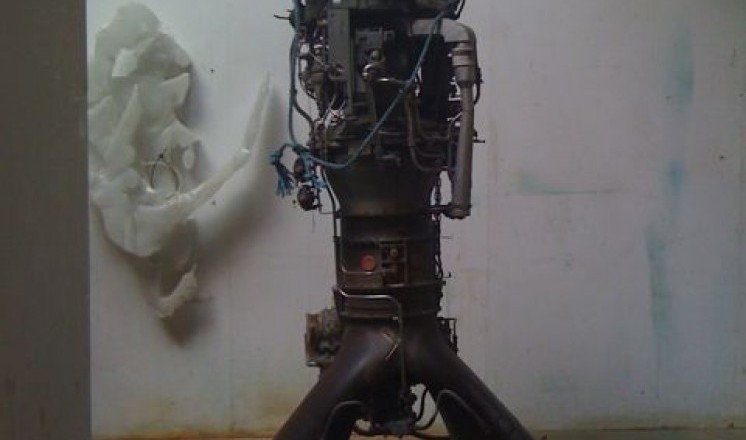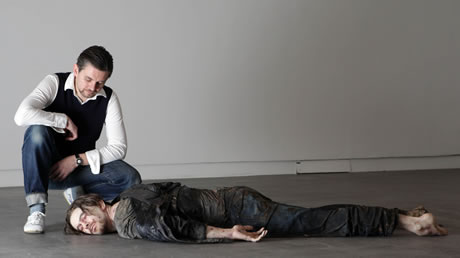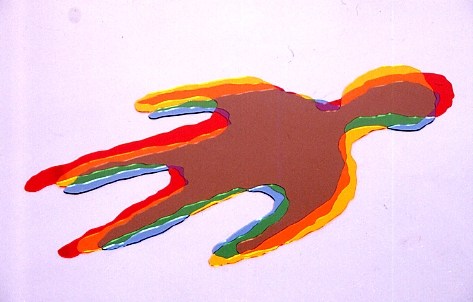The World is Almost Six Thousand Years Old
RSS FeedWe have a new exhibition coming to The Collection and various sites in February 2013. This exhibition has been curated by Tom Morton, who is contributing editor to frieze magazine and co-curator of British Art Show 7: In the Days of the Comet.
THE WORLD IS ALMOST SIX THOUSAND YEARS OLD: CONTEMPORARY ART AND ARCHAEOLOGY FROM THE STONE AGE TO THE PRESENT
2 FEB – 7 MAY, 2013
Featured artists: Rupert Ackroyd, Charles Avery, Anna Barriball, Martin Boyce, Edwin Burdis, Anthony Caro, Gillian Carnegie, Dan Coopey, Keith Coventry, Matthew Darbyshire, Nicolas Deshayes, Jacob Dwyer, Jess Flood-Paddock, Roger Hiorns, Jan Ijäs, Sarah Lucas, Jeremy Millar, Adrien Missika, David Musgrave, Karen Russo, Alexander Tovborg.
Venues across Lincoln: The Collection Museum, The Usher Gallery, Lincoln Cathedral, Lincoln University Greestone Building, Greyfriars Building.
The World is Almost Six Thousand Years Old is an exhibition that brings together objects from the County of Lincolnshire’s archaeological holdings with works by over twenty emerging and established contemporary artists. Taking its title from a description of the age of the Earth found in William Shakespeare’s As You Like It, the show extends across five venues in the city of Lincoln, a site of human habitation since the Paleolithic era. At its centre is a critical awareness of the mutability of the material record, of how objects may be mobilized to speak of multiple histories, both credible and fabulous.
At The Collection Museum, a number of shelving units from the city’s archaeology store will be installed, complete with their contents (ranging from medieval masonry to Anglo-Saxon human remains), in the temporary exhibition galleries. This ‘found’ display strategy contrasts with four bespoke vitrines created by Rupert Ackroyd, Dan Coopey, Matthew Darbyshire and Nicolas Deshayes, which contain archaeological items selected by the artists from The Collection’s holdings. Other highlights in this venue include a newly commissioned work by Edwin Burdis for the Collection Museum’s sound wall, a film by Jan Ijäs’ exploring the notion of the contemporary landfill as an archaeological deposit, and sculptural works from the Arts Council Collection by Martin Boyce and Sarah Lucas that speak of disinterred histories and recovered pasts.
At The Usher Gallery, Jess Flood-Paddock will show her new installation ‘Love, Like a Cough, Cannot Be Concealed’ (created on a recent residency at Wysing Arts, Cambs) which reflects on natural disaster as an unintended archaeological ‘tool’, and the suppression of intimately charged material from the Classical era by 18th- and 19th-Century scholars. Also at The Usher, Adrien Missika’s recent film of a petrified tree on a Hawaiian beach will be shown alongside a sculpture by Anthony Caro that suggest the skeletal remains of an antediluvian leviathan.
In the transept of Lincoln Cathedral (a building described by John Ruskin as ‘the most precious piece of architecture in the British Isles), Turner Prize-nominated artist Roger Hiorns will debut a new work, Untitled (2013), comprised of a jet engine suspended vertically in a steel frame.
For special periods during the run of the exhibition, The Greestone Building and The Greyfriars Building will play host to new films by the artists Jacob Dwyer and Karen Russo, which take as their departure points two sites steeped in ambiguous, and often fantastical historical narratives: the maze-like 16th-Century Cuban city of Camaguey, and the extraordinary rock formations of Externsteine in North West Germany, sacred to early Christians, Nazi occultists, and contemporary Neo-Pagans alike.
The exhibition is accompanied by a publication.
Admission is FREE. Please see exhibition event for dates and opening times of the various venues.
Comments
Installation images: http://theworldisalmost6000yearsold.tumblr.com/
T Morton


